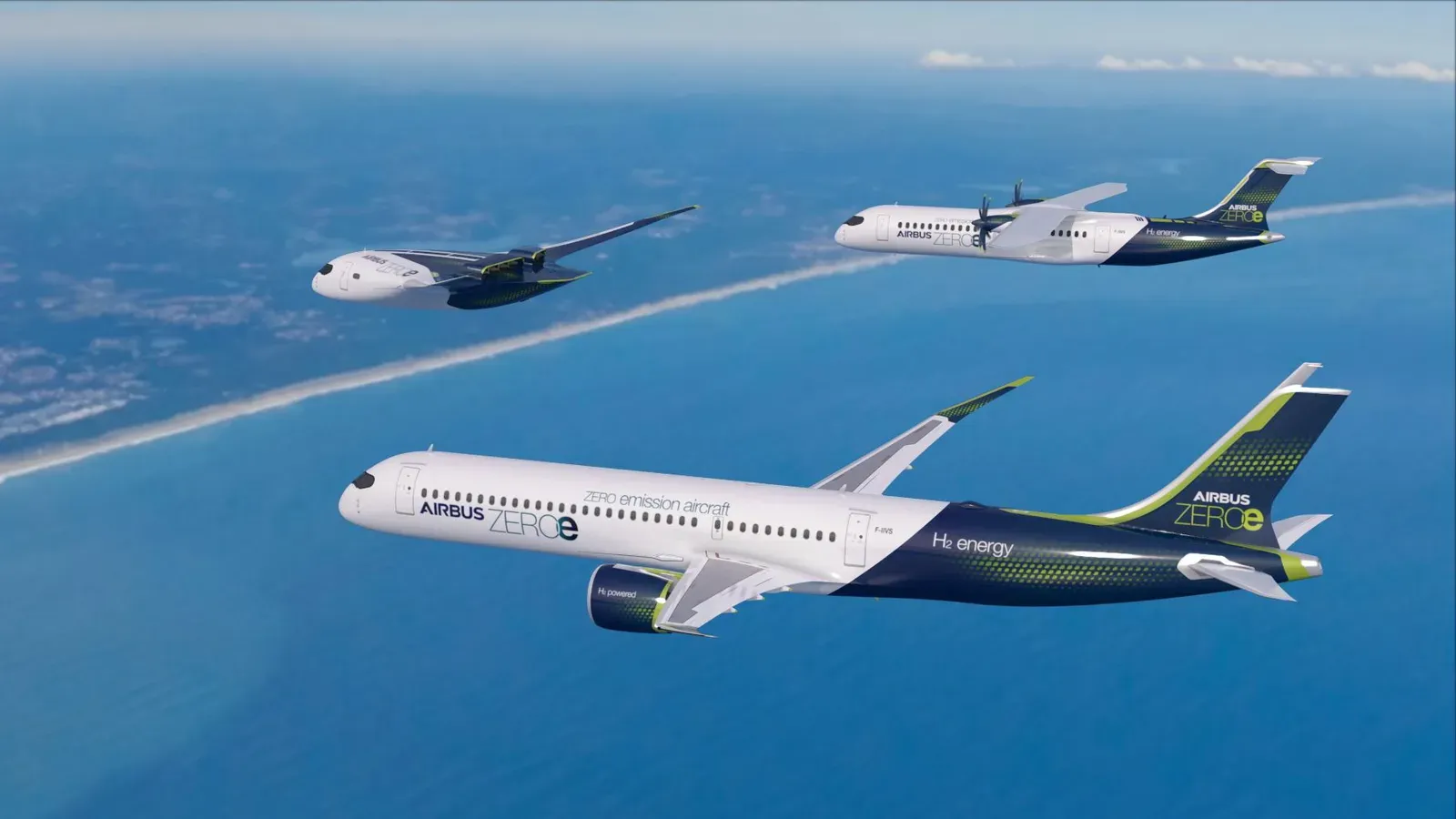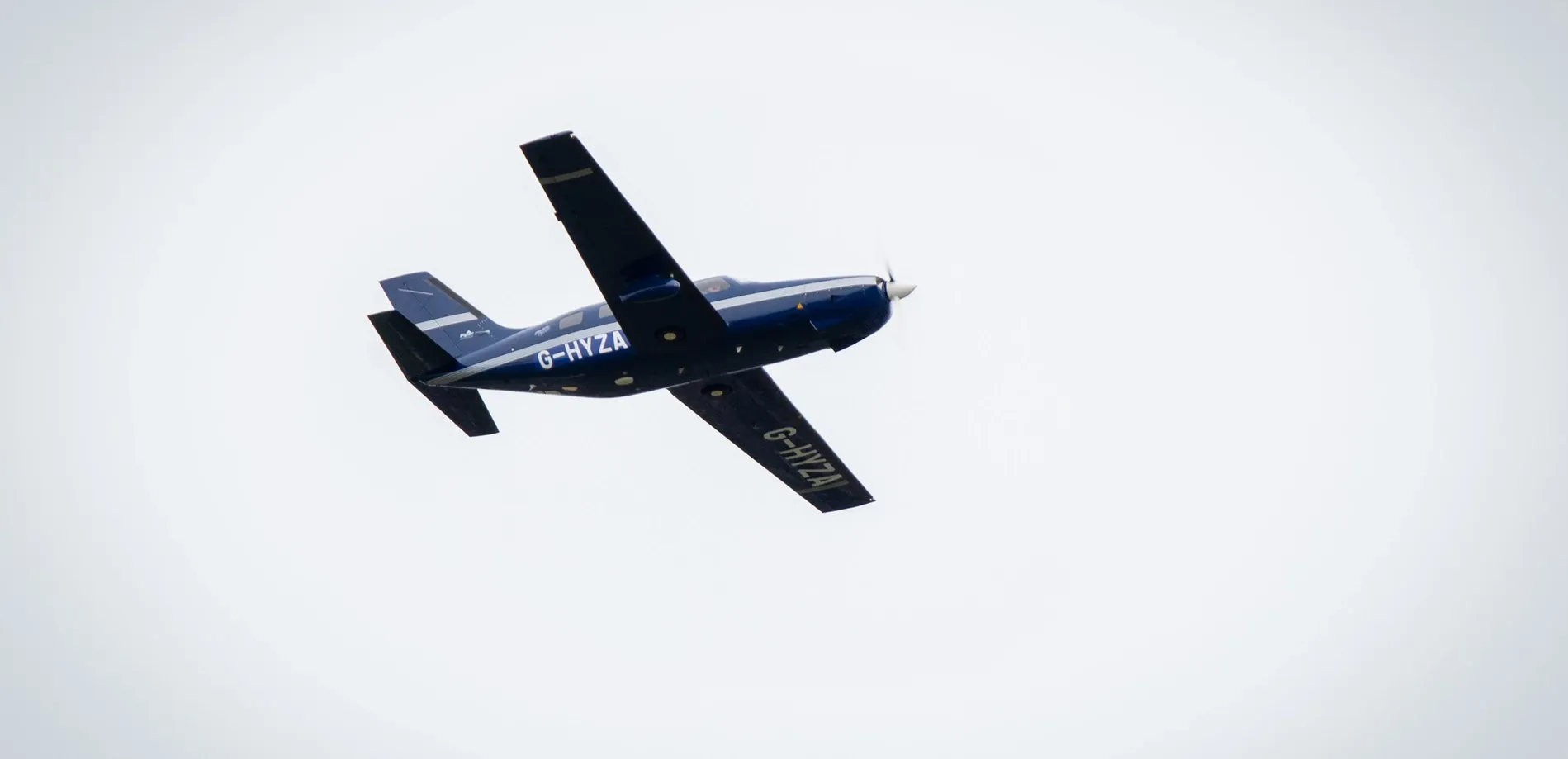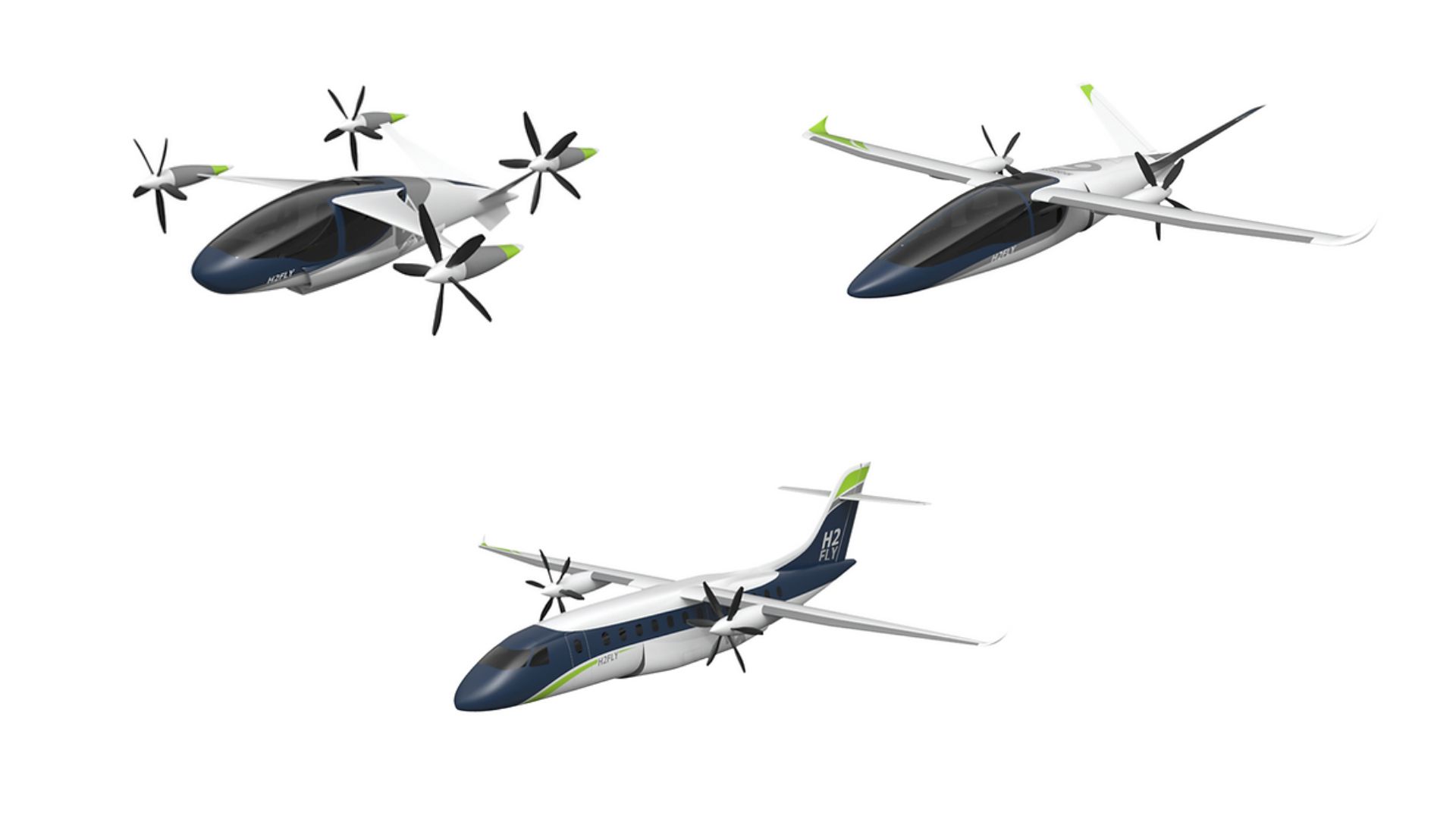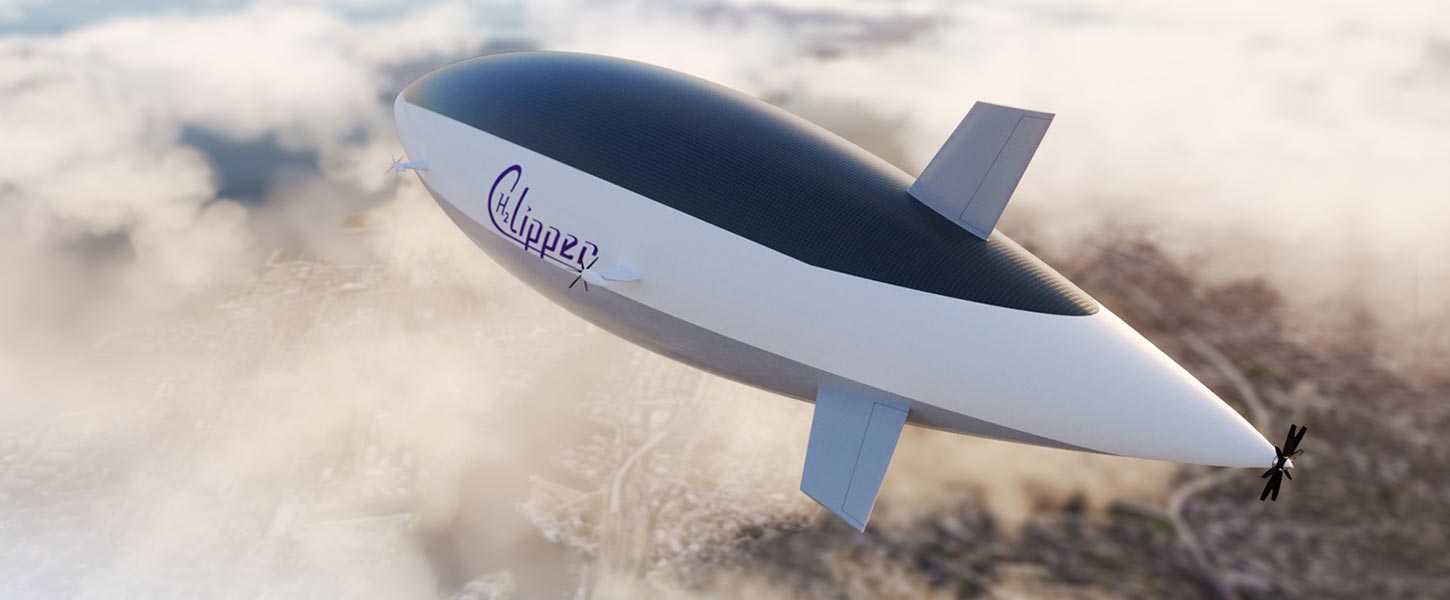Can you fly with hydrogen?

The straight answer to this question is yes, you can fly using hydrogen. But why should we do this? It is because of the carbon dioxide released during the transport through the air. Commercial aviation is one of the major contributors to the rise in global temperature and was seen as a hard to decarbonize sector until hydrogen was seen as an alternative fuel.
The idea behind is in fact not new. We flew using hydrogen in the early ’90s until humanity saw the dark side of hydrogen in the year 1937 when a giant balloon full of highly flammable gas caught fire falling from the sky killing 36 people. Yes, hydrogen was once used in airships until the Hindenburg disaster put an end to it. Several countries banned using of hydrogen in airships since then, but over the years we have gained more knowledge on the behavior and properties of this gas and modern technologies are well developed to handle this gas like a baby.
Today you can use hydrogen to fly in three possible ways.
1) Burning it – An enormous amount of power can be withdrawn by combusting hydrogen in a jet engine like the commercial flights available today.
2) Chemical reaction – The reaction between hydrogen and oxygen can be used to generate electricity using fuel cells which then power electric engines.
3) Buoyancy – hydrogen is highly buoyant, and this enables it to be used in airships. Though this idea is old school and seems already extinct modern technologies can still resurrect it.
Carbon neutrality
In almost every part of the world, efforts are being made to reduce carbon emissions and achieve carbon neutrality. Europe aims at reducing the greenhouse emissions in half by the year 2030 compared to the levels in the year 1990. Decarbonization of aviation is not easy and needs to be done step by step thus consuming lots of time. The initial steps would be the renewal of present aircraft making them lighter, economical, and more aerodynamic thereby reducing the fuel consumption by 20 to 30%. Less fuel consumed means less emission. Other initiatives include reducing the waiting time during landing and exploring the use of other sustainable fuels. A direct transition into a carbon-free industry will lead to the total collapse of the entire industry.
Talking about other sustainable fuels biofuels produced from biomass and synthetic fuel produced by combining green hydrogen and captured CO2 could play a major role, as these are considered to be carbon neutral fuels and also could be burned in modern conventional jet engines without modifications. Apart from these possibilities, aerospace companies consider using pure hydrogen to be a more promising vector because hydrogen can be either be burned in a modified jet engine to produce thrust or converted to electricity using fuel cells to drive electric motor-driven propellers.
Challenges
Developing a land or water-based mobility is very easy compared to developing an airplane because weight and volumes of storage tanks are not an issue here. The balancing of masses to keep the plane’s center of gravity under control makes it even more complex.
The storage of hydrogen is a major challenge here. Though hydrogen has more energy in terms of mass compared to conventional jet fuel, it’s the opposite in terms of volume. This problem can be solved by liquefying hydrogen, but this is not an easy task. In order to prevent the change of state, liquid hydrogen must also be maintained at -253°C thus making this storage option energy-intensive. Apart from this, the tanks must also be made of durable and lightweight material, as weight is a concern for air travel. These tanks are normally multi-walled to prevent radiation losses.
Another challenge is the placement of these tanks. Today’s airplanes store the fuel in their wings, but these wouldn’t be large enough to store hydrogen, so the design of hydrogen aircraft would also be different. A possible solution is to place the tanks behind the rear pressure bulkhead. Apart from these challenges fuel cells on a megawatt-scale with very high efficiency must also be developed. These fuel cells generate electrical power that supplements the gas turbines.
State of the art
Using hydrogen in the field of aviation is no more a concept. It's becoming a reality as big aerospace companies are planning to develop their aircraft for hydrogen.
Airbus
The European aircraft manufacturer strongly believes in the use of hydrogen both as synthetic fuel and as a primary power source. Airbus has revealed three concepts for zero-emission aircraft which could enter service in the year 2035. These include:
1. A Turbofan design – This would be able to transport 120-200 passengers for a 2000 nautical mile range (3704 km). The aircraft will be powered by 2 gas turbine engines modified for liquid hydrogen combustion.
2. A Turboprop design – This will be able to transport 100 passengers over a 1000 nautical mile range (1852 km). The aircraft will be powered by a turboprop gas turbine engine.
3. A blended-wing body design – This aircraft looks entirely different from modern airplanes, as its wings are merged with the main body of the aircraft and work similarly to the turbofan concept. This large fuselage enables good storage space and also enhances aerodynamics compared to conventional aircraft.

ZeroAvia
ZeroAvia, A California-based start-up believes that using hydrogen in aviation is safer compared to commonly used fuels today. The company works on building aircraft that work on the principle of hydrogen-electric propulsion. ZeroAvia’s flights get its power from the electric motors that use the electricity generated using fuel cells. With the support of the UK government, the company has already developed the first version of its hydrogen aircraft known as HyFlyer I and is capable of carrying 20 passengers on board for about 350 nautical miles (648 km). The company plans to enter commercial aviation by the year 2023. The company also plans to produce large aircrafts capable of carrying 200+ passengers for about 5000 NM range (9260 km) by the year 2040.

H2FLY
A Germany-based start-up has already proved that you can fly using hydrogen when its first fuel cell powertrain aircraft called HY4 flew for the first time successfully in the year 2016. The company also works on various concepts including:
1. Air Taxi – Capable of carrying 4-6 passengers over a 500 km range.
2. Business Aircraft – Capable of carrying 19 passengers over a 1500 km range.
3. Regional Aircraft – Capable of carrying 40 passengers over a 2000 km range.

H2 Clipper
This California-based start-up is working on bringing back the huge hydrogen airships which went extinct during the early 90s. With the use of modern fabrication and mass production techniques, 3D printing, aerodynamics, stronger and light-weight materials, the aims to resurrect hydrogen airships. Using hydrogen enables better propulsion with reduced drag. The company also plans to produce green hydrogen onboard using solar panels. By doing so hydrogen airships would enable cheaper transport of cargo, transport of green hydrogen, retransmit cellular and internet service hovering at high altitude for a long time, rapid delivery of emergency supplies without an airport infrastructure due to the vertical take-off capability of airships.

Conclusion
Though the works done by these companies have aroused a lot of interest, not everyone in the aviation industry is excited about hydrogen. This is mainly because of the risks involved in handling the fuel and the lack of infrastructure for large-scale hydrogen production and storage. Airports must be modified to enable large-scale hydrogen storage and not all airports could be modified to do so, as this requires large capital investments. Apart from these hydrogen airplanes would look larger than modern commercial aircraft due to the large space needed for onboard hydrogen storage. Larger aircraft design means larger drag and hence bigger airframes and tough materials must be used. All these are problems that could be solved with technological advancements, capital, and time. So, in conclusion, you can 100% fly using hydrogen, but at present, there is a need to generate awareness about flying with hydrogen and so only time could tell if we would see water emitting airplanes in the air soon.
-Afrin Hewitt Alban